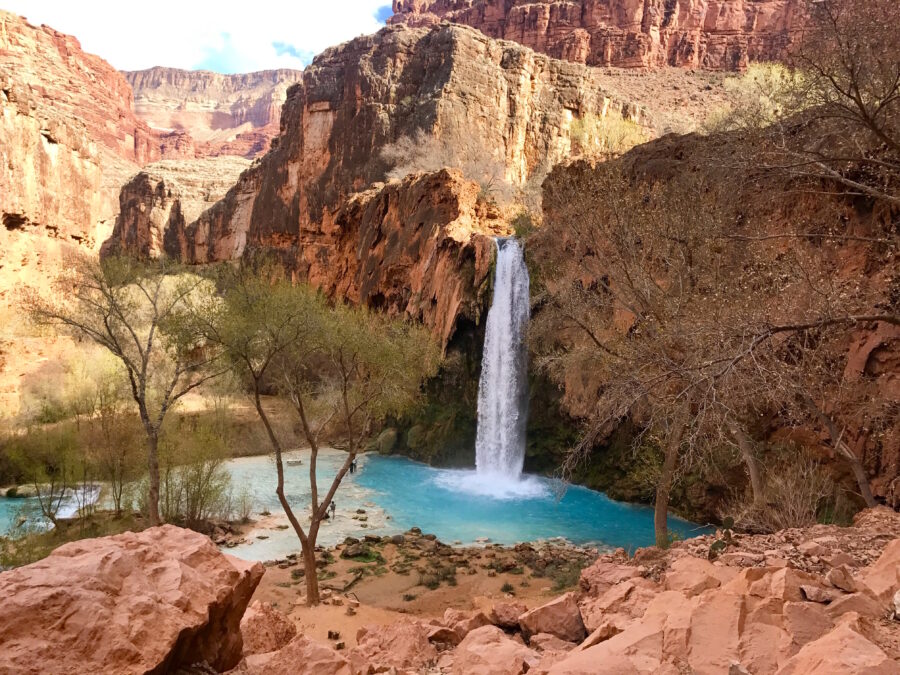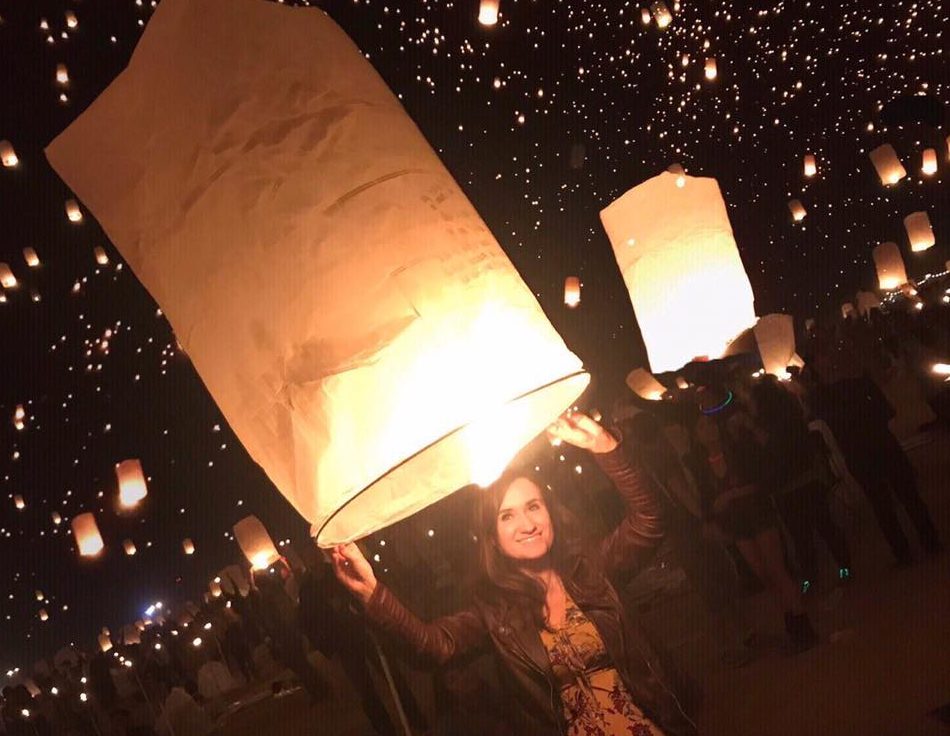When you imagine the magical, bucket-list beauty that is Havasupai and Havasu Falls, you probably imagine it in summer. I know I did!
Wading through sun-drenched waterfalls, sleeping under the stars in a hammock, lazing in turquoise pools in a colorful floatie…all of the Havasupai activities you’ve probably seen on Instagram seem suited for the summer sun.
So when the only permits I could snag this year were for the end of February, I was nervous that I’d be too cold to fully enjoy it—and I couldn’t have been more wrong!
Here’s why winter (February and March) might just be the best time to visit Havasupai.
1. It’s easier to get reservations
Havasupai reservations for 2020 open at 7am PST on February 1, but the month of February still has dates available as of January 2020. That’s right — you can reserve permits for February 2020 right now! Just visit the official Cancellation/Transfer page here.
In 2020, as in previous years, the entire year of permits will sell out within a few minutes of going on sale — except for a few random dates in February and March, including February 2021.
If your schedule is at all flexible, book those dates instead of competing with tens of thousands of others for a summer weekend that you might not get.
2. You might have the waterfalls to yourself
Want to sit in awestruck silence at the bottom of Mooney Falls, watching the waters roar 200+ feet down travertine cliffs and caress your face with morning mist…without a group of GoPro-toting strangers blocking your view? Want to enjoy a hot cup of coffee alone with Havasu Falls? Go in winter. In late February, we enjoyed several long, uninterrupted stretches of time at three of the four main waterfalls—Little Navajo, Havasu Falls, and Mooney Falls—without any other company whatsoever. I’ll never forget those special moments.
Friends who went in summer months showed me video of the crowded falls from their trips, and it was an entirely different experience.
3. Yes, you can still swim
The waters of Havasupai aren’t just a magical color — they’re a magical temperature, too.
The water is geothermally heated, maintaining a consistent 70º temperature year-round. While you won’t want to spend all day in your bikini, that’s still plenty warm enough for a dip. (And sunning yourself on a rock afterwards will feel even better—#lizardlife.)
If you’re hiking down to Beaver Falls in winter, though, start your hike early, since the sun can dip behind the canyon walls long and make you chilly several hours before it actually sets in the sky.
4. Beat the heat on the way out
Even if you’re physically fit, the hike out of Havasu Canyon is brutal. The final switchbacks climb more than 1,000 feet in a mile.
My friend Nick and I, both seasoned hikers (and Nick an avid trail runner, too,) were sweaty and winded by the end of the hike, stripped down to short sleeves and shorts in the 40º weather. Warmer temperatures would’ve made the climb much more miserable.
5. Enjoy a safer climb down Mooney Falls
For me, hiking on steep exposures is like parallel parking on a busy city street: I’m totally capable, but I get extra nervous when I feel rushed.
If, like me, the prospect of clinging to a slippery wet chain on a sheer cliff face 100+ feet off the ground is enough to make you anxious, the last thing you need is the pressure of a line of people right behind you, or folks trying to go down while you’re trying to go up.
Winter is your best bet for a solo, stress-free climb. (At least, as stress-free as that climb can be!)
6. See more local wildlife
Animals that tend to hide in their dens in the heat of the summer, like the rare gray fox, trot across the trail in winter like it ain’t no thang. Our close encounter with a curious desert fox, lapping up melted snow on the trail right in front of us, was another highlight of the trip.
7. Savor the scenery without sunburn
The typical line of advice for hiking to Havasupai is to start as early as possible, navigating by headlamp in the dark, since the heat of the day will quickly catch up to you.
But in my opinion, hiking in the dark means you’ll miss out on much of the beauty and value of the experience.
There’s nothing like hiking down through literally millions of years of geologic time, watching coral-colored limestone give way to chalky sandstone and powdery shale, then looking up and seeing just how far you’ve come from the hilltop.
8. Two words: peace and quiet.
If your ideal nature vibe is more “solitude” than “spring break”, winter in Havasupai might be your season. The spring and summer holidays bring the same crowds to Havasupai as any other tropical bucket-list destination: think large groups of young people with selfie sticks, Bluetooth speakers, and inflatable swans/unicorns/donuts.
“It’s like a frat party without the alcohol,” a friend who visited in July 2017 recalls. “Super fun, but not exactly magical.”
9. Stay safe from flooding
July and August, the most popular months for tourists at Havasupai, are smack dab in the middle of Arizona’s monsoon season. The falls turn from turquoise to chocolate brown after a rain, and enough rain means life-threatening flash floods and landslides. Check out this footage from a 2008 flash flood to see the terrifying power of a Grand Canyon monsoon. Flash floods are least likely in the winter time.
10. Go inside a reverse snow globe
It snows every winter in the Grand Canyon, but it never snows at Havasu Falls. That’s because the warmer, drier air inside the canyon acts like a forcefield against the flakes.
When conditions are right, it’s like being in a reverse snow globe: you can see the snow falling just above you, while you stay warm and dry beside the waterfalls. It’s a magical, once-in-a-lifetime experience.
11. Warm fry bread tastes better when it’s cold outside
It’s just science. 🙂
No matter the time of year, visiting Havasupai and Havasu Falls is the trip of a lifetime.
But if you’re wondering when to check it off your bucket list, I highly recommend the winter.



8 Comments
Leave your reply.